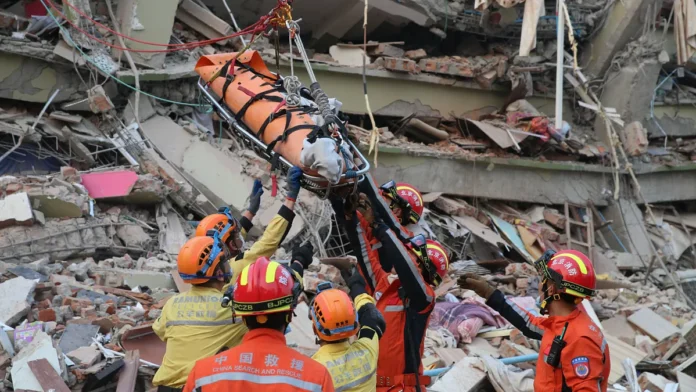A devastating 7.7 magnitude earthquake struck central Myanmar near Mandalay nearly a week ago, resulting in significant casualties and widespread destruction. As of Thursday, April 3, 2025, the death toll has risen to 3,085, with 4,715 injured and 341 individuals still missing.
The earthquake caused extensive structural damage across multiple regions, including the collapse of thousands of buildings, the buckling of roads, and the destruction of bridges. The healthcare infrastructure was severely impacted, with four hospitals destroyed and numerous others partially damaged, rendering access to medical care nearly impossible in the worst-hit areas.
More than 1,550 international rescuers from 17 different countries have been sent to support local efforts in response to the crisis. To offer medical aid, India and a combined Russian Belarusian team have set up mobile hospitals in Mandalay. The displaced people, many of whom are remaining in open fields out of concern for aftershocks, are being housed in large tents. In Myanmar, a nation dealing with a protracted civil war since the military takeover in 2021, the earthquake has made the already dire humanitarian situation worse. Before the earthquake, more than 3 million people were displaced, and the catastrophe has made their situation worse. Reports of ongoing fighting in some areas raise doubts about the effectiveness of the temporary ceasefire that has been declared until April 22 to facilitate the delivery of aid.
Beyond Myanmar’s boundaries, the earthquake’s effects were felt, most notably in Bangkok, Thailand, where a collapsed construction site claimed 22 lives and injured 35. In order to find and help survivors in the impacted areas, rescue efforts are still underway.
Resources are being actively mobilized by international aid organizations to support relief efforts. Medical attention, food aid, and shelter are being sought by organizations like the World Food Program, Save the Children, and the International Rescue Committee. For these organizations to continue and grow their relief efforts, financial contributions are essential.
As rescue and relief efforts continue in Myanmar amid difficult circumstances, such as damaged infrastructure and ongoing civil unrest, the situation there remains dire.
In order to meet the impacted populations’ immediate needs and promote long-term recovery, the assistance of the international community is essential.

